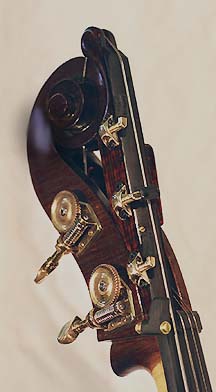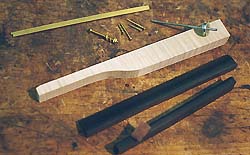![]()
|
 |
C extensions are the most popular way to extend the low end range of the double bass. I hand craft my custom extensions from figured maple with a separate ebony fingerboard rather than all ebony. This is a more responsible use of this endangered material, especially because the ebony used is recycled from old bass fingerboards. I must stress that I have to have your bass to make my extension- it is not available as a kit! You could have your local luthier consult my chapter on extension installation in Chuck Traeger's book if you can't get the bass to me. |
 |
The extension
uses a wheel with bearings to take the pressure of the string over the
top for ease of tuning. The maple is fitted to the scroll precisely, strengthening
the pegbox, where the top of the strings are anchored. This also improves
the sound of the bass. I never cut the bass scroll to install an extension.
|
|
|
The extension & E stop are mounted with 2 screws each and a hole is drilled through the scroll for the string (not necessary but recommended). Rob Anzellotti's excellent individual capos are available if stops for other notes are desired. The entire addition adds little extra weight and minimally impacts the original structure of the instrument. All stops close without the player having to hold down the string. |
|
|
I have developed my extensions over the last thirty years. The thumb rest on the pegbox side of the extension gives the player a comfortable place to finger the added notes but leaves plenty of room to change strings. The extension's fingerboard is carefully set to follow the curve of the existing board- critical for the clarity of the C string 's sound, ease of fingering and closing of the stop(s). E mail
me for more details- |

|
Copyright 2009 William E. Merchant, all rights reserved.